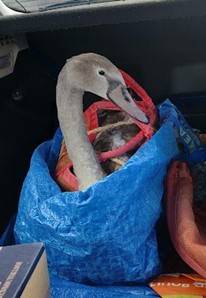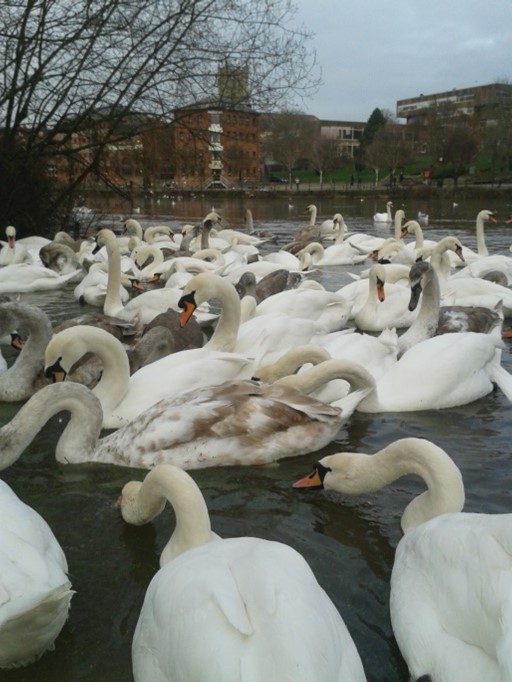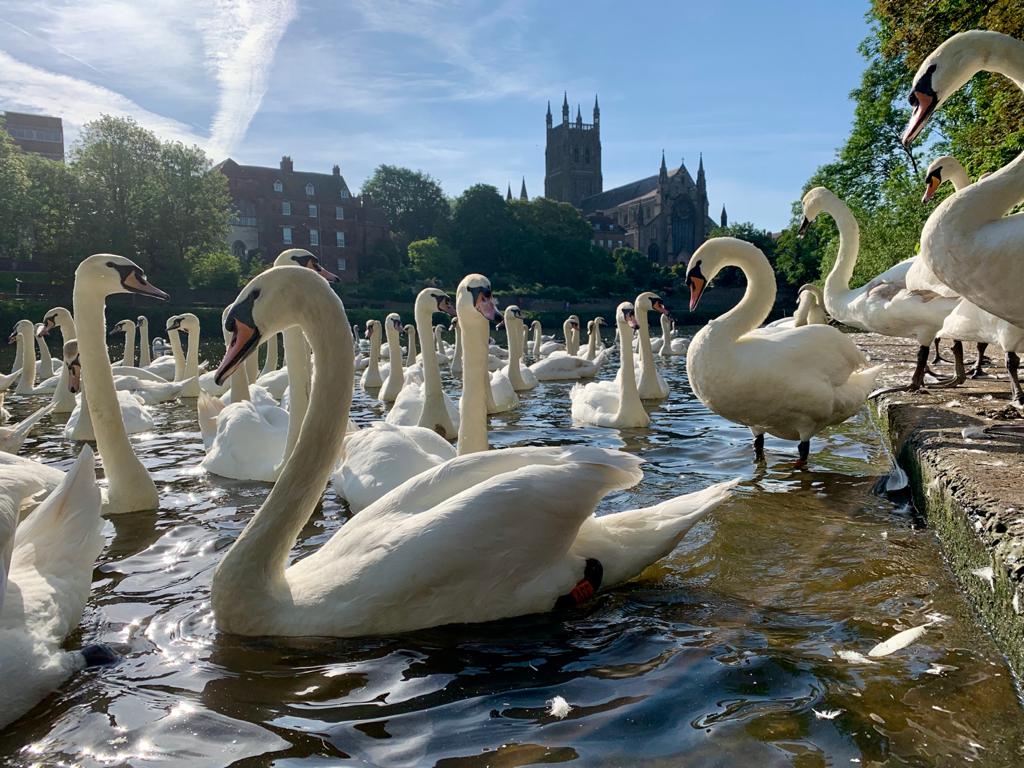Bonds between parents and offspring loosen as cygnets become fully grown and start to turn white. They spend more time apart until the cygnets take off or, more likely, are chased off by parents wanting the territory for the next brood.
It can be a hard lesson for the cygnets, to find themselves repeatedly driven off. It can be hard to witness, too, if the youngsters are slow to realise what is happening. It could be said that this is the last lesson parents teach their cygnets – what aggressive swans look like, and what to do about it. Cygnets landing in other swans’ territories will be attacked and may be killed if they do not leave promptly.
Departing cygnets are on the lookout for other swans to join. The best outcome is finding a flock of other cygnets and juvenile swans where they can spend a few years growing up and finding a mate. Once they pair up, they’re ready to leave in search of their own territory, and start the cycle again.
Occasionally, parents fly their cygnets into a non-breeding flock – very likely the one they matured in themselves – and leave them there. Here, the cygnets learn about aggression within their new flock, as the young ones practise all the behaviour they will need as adults.
Leaving home is a risky time for cygnets, especially those leaving home in autumn before they are experienced fliers. They may well collide with power lines, trees or buildings. They may become tired and land on roads, mistaking them for water. Every year cygnets arrive in the swan sanctuary in Worcester, having been retrieved from roads in the City and the surrounding countryside. Sadly, some don’t make it.



